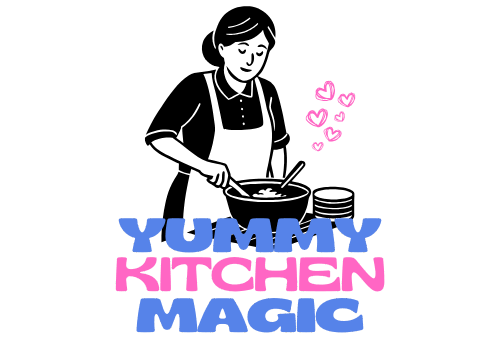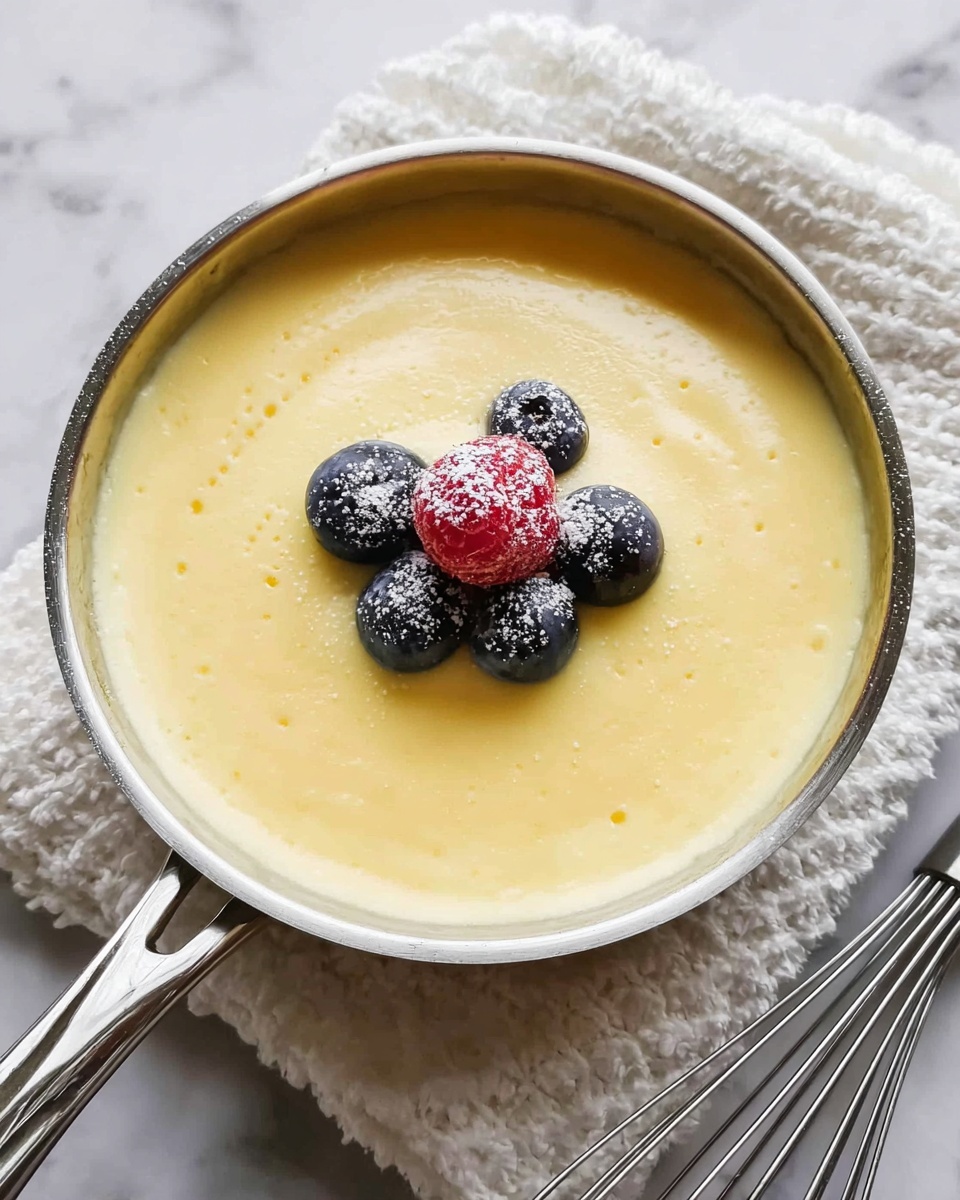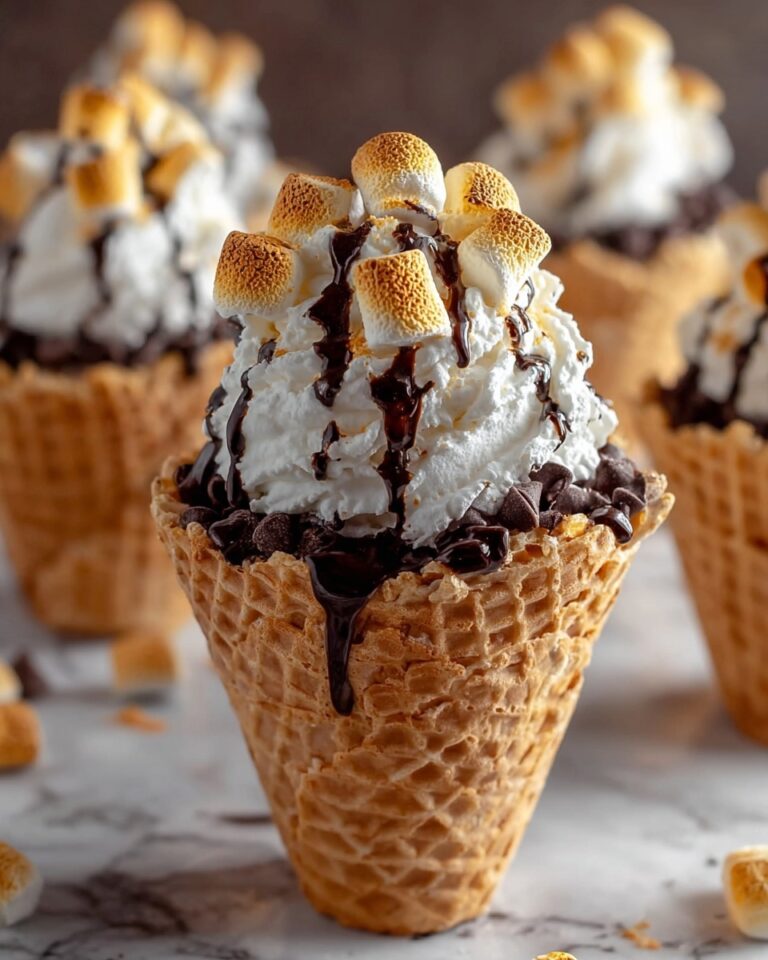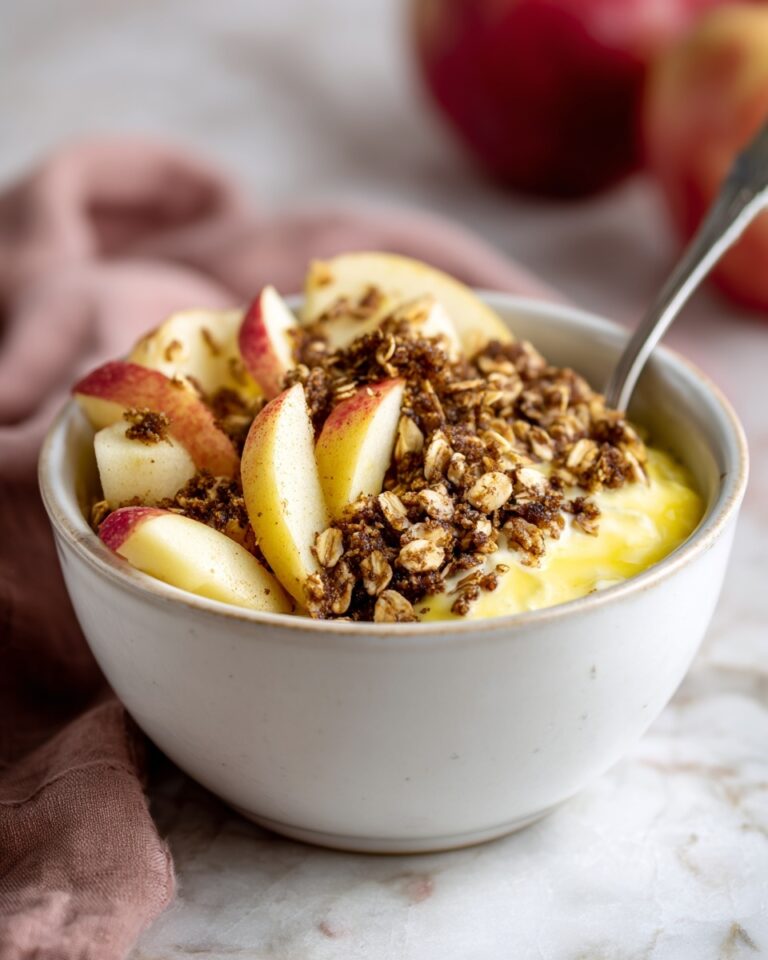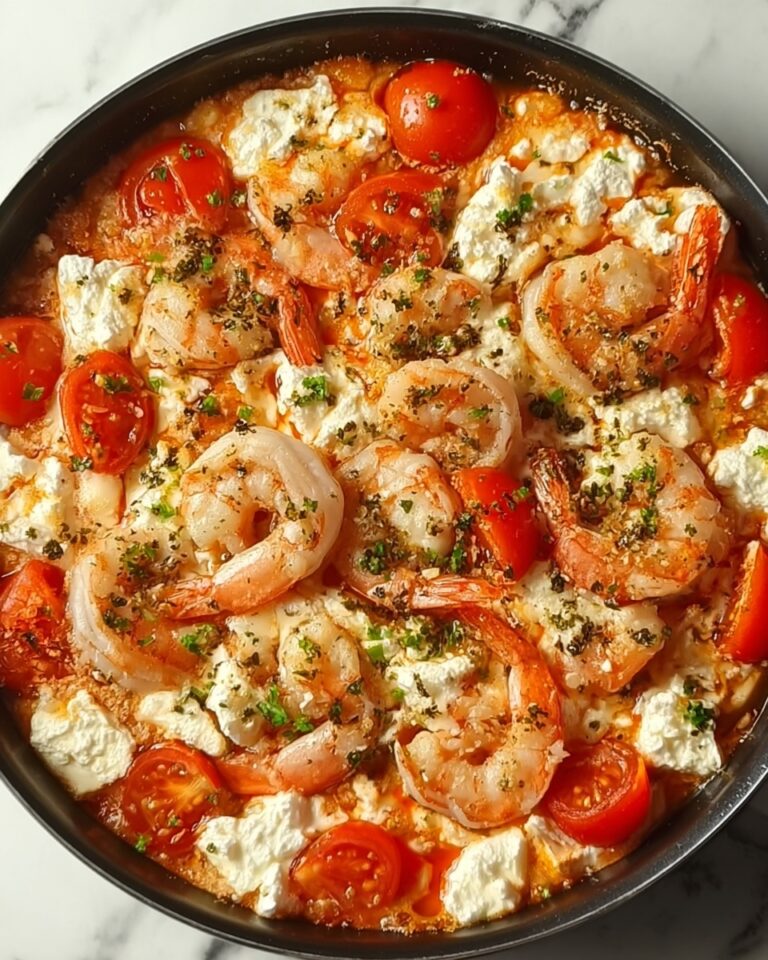If you’ve ever dreamed of creating a luxurious dessert that’s creamy, comforting, and simply irresistible, look no further than this Homemade Vanilla Custard Recipe. This classic concoction transforms simple ingredients into a silky, velvety delight that’s perfect on its own or as a base for countless desserts. Every spoonful melts in your mouth with rich vanilla flavor and a smooth texture that feels like a warm hug, making it a treasured favorite in kitchens around the world.

Ingredients You’ll Need
Getting to know your ingredients is the first step toward nailing this custard. Each one is essential to achieving that perfect balance of creaminess, sweetness, and vanilla aroma. They all work together to create custard that’s thick yet delicate, sweet but not overpowering, and beautifully golden.
- Whole milk: The creamy base that lends richness and smooth texture to the custard.
- Granulated sugar: Adds just the right amount of sweetness to enhance the vanilla notes.
- Large egg yolks: Provide structure and contribute to the custard’s luscious thickness.
- Cornstarch: A gentle thickener that helps the custard set perfectly without becoming heavy.
- Unsalted butter: Adds a glossy finish and a hint of indulgent silkiness.
- Pure vanilla extract: The star ingredient that infuses the custard with its warm, aromatic charm.
- Pinch of salt: Balances the sweetness and enhances all the other flavors beautifully.
How to Make Homemade Vanilla Custard Recipe
Step 1: Warm the Milk
Begin by gently warming the milk in a heavy-bottomed saucepan over medium heat. Aim for it to steam gently without boiling, as this ensures creamy softness without scorching. This step awakens the milk’s natural sweetness, setting a lovely foundation for the custard.
Step 2: Whisk the Egg Mixture
While the milk is warming, whisk together the egg yolks, sugar, cornstarch, and a pinch of salt in a bowl until the mixture lightens and thickens slightly. This is your custard’s body and soul, so whisking well incorporates air and ensures a silky texture later on.
Step 3: Temper the Eggs
Slowly pour about half a cup of the warm milk into the egg yolk mixture while whisking constantly. This crucial step, called tempering, guarantees the eggs won’t scramble when added to the heat, creating a smooth custard instead.
Step 4: Combine and Return to Heat
Gradually whisk the remaining warm milk into the egg mixture, then pour the whole blend back into the saucepan. This ensures even cooking and helps the custard thicken uniformly.
Step 5: Cook Until Thickened
Place the saucepan over low to medium heat and stir constantly with a wooden spoon or heat-safe spatula. Watch patiently as the custard slowly thickens to the perfect consistency—a point where it coats the back of a spoon beautifully. This slow cooking is key for that signature creamy texture.
Step 6: Add Butter and Vanilla
Remove the pan from heat and immediately stir in the unsalted butter and vanilla extract. These enrich the custard and give it that shiny, inviting finish while boosting the warm vanilla aroma you’ll crave.
Step 7: Strain for Smoothness
To get the silkiest custard possible without any lumps, strain it through a fine-mesh sieve into a clean bowl. This final touch makes all the difference for a perfectly luxurious mouthfeel.
Step 8: Cool and Store
Cover the surface of the custard tightly with plastic wrap pressed directly onto its surface to prevent a skin from forming. Allow it to cool to room temperature before placing it in the refrigerator, where it will chill and set to the ideal eating texture.
Step 9: Serve and Enjoy
This Homemade Vanilla Custard Recipe can be enjoyed chilled or gently warmed. Whichever you choose, it’s always a delight to savor on its own or paired with your favorite accompaniments.
How to Serve Homemade Vanilla Custard Recipe
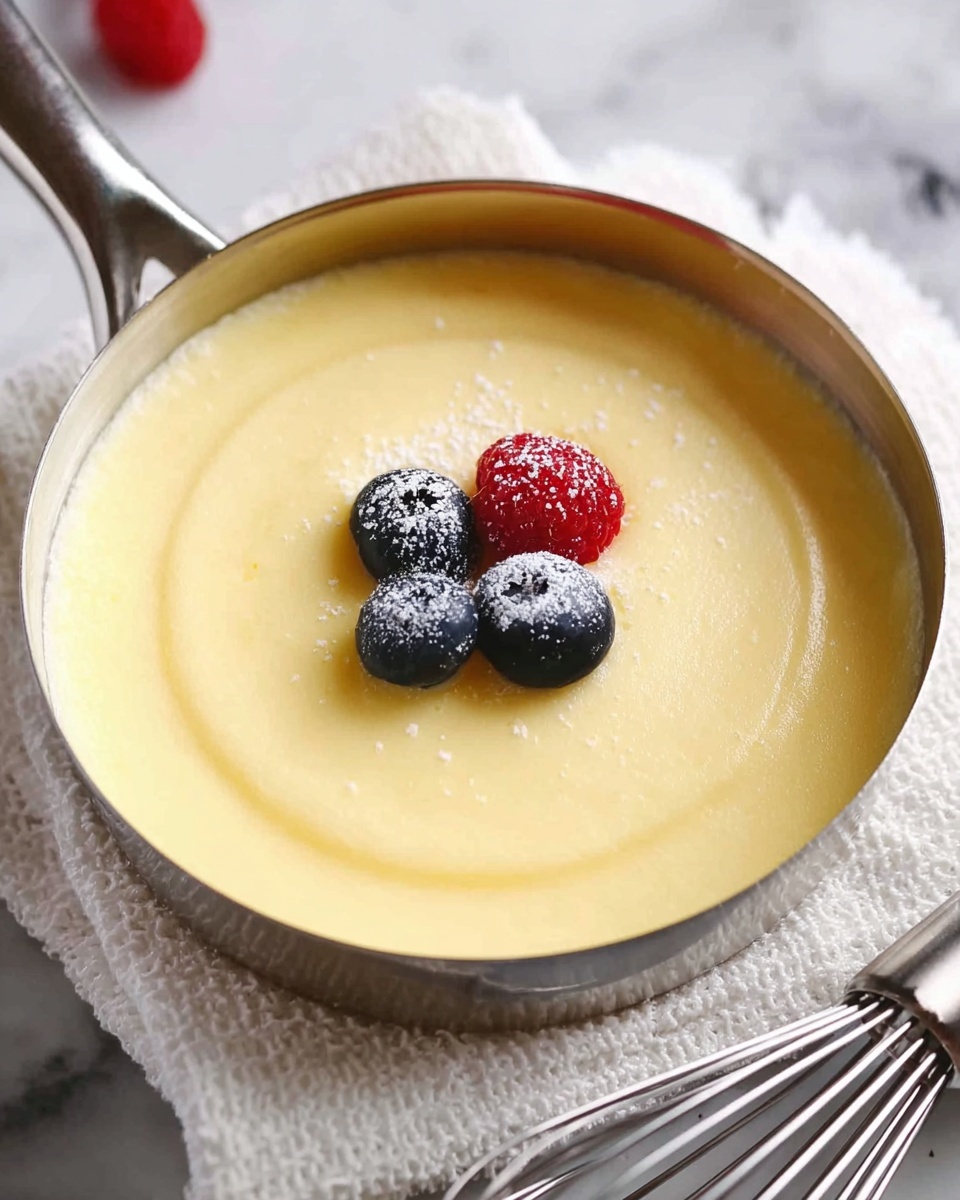
Garnishes
Adding garnishes enhances both the flavor and presentation of your vanilla custard. Fresh berries add a burst of tartness that contrasts beautifully with the creamy custard. A sprinkle of cinnamon or nutmeg can add warmth and a touch of spice. For an extra indulgent experience, a drizzle of caramel or grated chocolate works wonders.
Side Dishes
Custard pairs wonderfully with a variety of sides. Light, crisp cookies or shortbread provide a delightful textural contrast. Fresh fruit salad or poached fruits like pears or cherries complement the custard’s richness without overwhelming it. For a more decadent twist, serve alongside a slice of warm apple pie or a buttery tart.
Creative Ways to Present
Why not turn your Homemade Vanilla Custard Recipe into a showstopper? Serve it layered with fresh fruit and crushed biscuits in parfait glasses for an elegant presentation. Or, pour it over a warm sponge cake for a comforting dessert. Even freezing small portions into popsicles or custard-based ice creams can give you a delicious twist to enjoy on hot days.
Make Ahead and Storage
Storing Leftovers
Keep any leftover custard covered tightly in the refrigerator for up to 3 days. Make sure the plastic wrap touches the surface to prevent skin formation. This custard can continue to thicken slightly upon chilling, so a gentle stir before serving helps restore its creamy consistency.
Freezing
While freezing custard is possible, it’s best to do so with caution. Ice crystals can alter the smooth texture, making it grainy when thawed. If you must freeze it, pack it in airtight containers and thaw overnight in the refrigerator, stirring well before serving.
Reheating
To reheat, warm your custard gently over low heat, stirring constantly to prevent curdling or burning. Avoid high heat to keep that silky texture intact. Alternatively, a quick zap in the microwave on low power with frequent stirring works well for small portions.
FAQs
Can I use milk alternatives in the Homemade Vanilla Custard Recipe?
Yes, you can substitute whole milk with almond, oat, or soy milk, but keep in mind that this will slightly change the flavor and texture. Full-fat options work best to preserve the custard’s richness.
What causes custard to curdle, and how can I prevent it?
Custard curdles when eggs cook too quickly or at too high a temperature. To prevent this, always cook the custard over low heat and stir constantly. Tempering the eggs properly before combining with hot milk is also essential.
Can I add other flavors to this custard?
Absolutely! While vanilla is classic, you can infuse custard with cinnamon sticks, citrus zest, or even a splash of liqueur during cooking to create exciting variations. Just strain out any solids before serving.
Is it necessary to strain the custard?
Straining is highly recommended for the smoothest texture. It removes any cooked egg bits or lumps, giving your custard that silky finish that feels truly special on the palate.
How long does custard take to thicken during cooking?
On low to medium heat, expect thickening to occur within about 8 to 10 minutes of constant stirring. Patience is key—rushing the process with high heat increases the risk of curdling.
Final Thoughts
There’s something so wonderfully comforting about making and enjoying a classic Homemade Vanilla Custard Recipe. It’s a recipe that connects us to tradition while allowing endless personal touches and creativity. Whether you’re spooning it straight into bowls or using it as the star of a dessert masterpiece, this custard promises pure joy in every creamy bite. Give it a try—you might just discover your new favorite dessert!
Print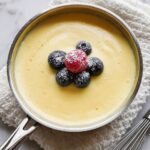
Homemade Vanilla Custard Recipe
- Prep Time: 10 minutes
- Cook Time: 15 minutes
- Total Time: 25 minutes
- Yield: 4 servings
- Category: Dessert
- Method: Stovetop
- Cuisine: American
Description
This homemade vanilla custard recipe is a rich and creamy dessert made with simple ingredients like whole milk, egg yolks, and vanilla. Perfectly smooth and silky, it can be served chilled or slightly warmed, making it a versatile treat for any occasion.
Ingredients
Custard Base
- 2 cups whole milk
- 1/2 cup granulated sugar
- 4 large egg yolks
- 2 tablespoons cornstarch
- 1 pinch salt
Finishing Ingredients
- 1 tablespoon unsalted butter
- 1 1/2 teaspoons pure vanilla extract
Instructions
- Warm the Milk: In a heavy-bottomed saucepan, warm the milk over medium heat until it begins to steam but does not boil. Remove from heat.
- Whisk the Egg Mixture: In a separate bowl, whisk together the egg yolks, sugar, cornstarch, and salt until the mixture is pale and slightly thickened.
- Temper the Eggs: Slowly pour 1/2 cup of the warm milk into the egg mixture while whisking constantly to prevent scrambling and temper the eggs.
- Combine Mixtures: Gradually whisk in the remaining warm milk, then pour the entire mixture back into the saucepan.
- Cook the Custard: Cook over low to medium heat, stirring constantly, until the custard thickens and coats the back of a spoon, taking care not to let it boil.
- Add Butter and Vanilla: Remove from heat and stir in the butter and vanilla extract until the custard is smooth and glossy.
- Strain for Smoothness: Strain the custard through a fine-mesh sieve into a clean bowl to ensure a perfectly smooth texture.
- Cool the Custard: Press plastic wrap directly onto the surface of the custard to prevent a skin from forming, let it cool at room temperature, then refrigerate until chilled.
- Serve: Serve the custard chilled or slightly warmed, garnished as desired, such as with fresh fruit or a sprinkle of cinnamon.
Notes
- Constant stirring and moderate heat are key to prevent the custard from curdling or burning.
- Tempering the eggs with warm milk is essential for a smooth texture without scrambled eggs.
- Pressing plastic wrap directly on the surface prevents a skin from forming on the custard.
- For a dairy-free version, substitute whole milk with a plant-based milk like almond or oat milk, but the texture may slightly vary.
- This custard can be used as a base for other desserts such as trifles or poured over cakes.
